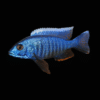-
×

-
×

-
×

-
×

-
×

-
×
 Golden Eyes Vampire Crab - Geosesarma Sp. - Decapod Crustacean
1 × £8.71
Golden Eyes Vampire Crab - Geosesarma Sp. - Decapod Crustacean
1 × £8.71 -
×

-
×

Subtotal: £304.54












Emily Carter (verified owner) –
I recently added the Dragon Blood Peacock Cichlid to my freshwater tank, and I couldn’t be happier! After about two months of watching him thrive, I can confidently say this tropical fish is a showstopper. The vibrant reds and blues are absolutely mesmerizing and add such life to the aquarium! Compared to other cichlids I’ve kept, the temperament of this species is much more peaceful, making it perfect for a community tank. My other fish have taken to him beautifully, and he seems to be very curious yet calm, which I truly appreciate. I did notice that he has a bit of a territorial streak when it comes to food, so I recommend feeding them in separate areas if you have multiple cichlids. Overall, he arrived quickly and in excellent condition, thanks to the great packaging. I would highly recommend the Dragon Blood Peacock Cichlid to both beginners and experienced hobbyists looking to enhance their freshwater setups with a stunning fish that is also a joy to care for. This little guy has quickly become the centerpiece of my aquarium, and I can’t imagine my tank without him!